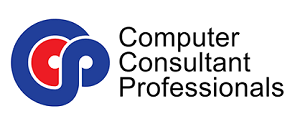While most businesses understand the importance of staying on the right side of the law, many don’t realize just how crucial it is to maintain software compliance. Using unlicensed or improperly licensed software leaves companies vulnerable to major penalties and legal trouble.
Even if there’s no malicious intent, ignorance of complex software licensing requirements provides no protection. Global companies and independent auditors keep close tabs, ready to impose hefty fines for any violations. It’s an area that must be taken extremely seriously across an entire organization.
Software Compliance Basics
At its core, achieving and maintaining software compliance means carefully following all rules and regulations around properly licensing and using various computer programs installed or accessed throughout your business infrastructure. This covers everything from operating systems and productivity suites to specialized business applications.
In a perfect world, it would be as simple as buying a program, installing it, and your compliance is assured. Real-world software licensing is far more nuanced.
Microsoft License Management
For most businesses relying on Microsoft’s ubiquitous productivity software and operating systems, Microsoft license management is paramount for remaining compliant. According to the people at Opkalla, this means carefully understanding entitlements and restrictions around various Microsoft license types.
With Microsoft’s traditional on-premises licenses, compliance meant purchasing a set number of licenses up-front to install on specific devices within your business. You owned those licenses permanently but were restricted from using them beyond your approved device count.
With newer subscription cloud licenses, compliance looks different. These software-as-a-service licenses grant access based on recurring subscription fees paid per user. Compliance relies on properly managing subscriptions, provisioned user access, and remaining within usage allocations.
Auditing and Penalties for Non-Compliance
Of course, the ultimate reason to prioritize software compliance is the immense pain and fallout from failing an audit and being deemed non-compliant. The Business Software Alliance (BSA) and other enforcement groups tirelessly pursue offenders.
Once an organization is found to be using unlicensed or under-licensed software, they face staggering settlement fees and legal penalties based on the magnitude of violation.
Beyond the financial ramifications, there is also the brand damage and competitive impact of being exposed as a non-compliant company flagrantly stealing software. It raises ethical questions that can hurt reputation, close business opportunities, and make attracting talent more difficult.
Managing Software Compliance Easily
So how exactly do organizations ensure they avoid the financial catastrophes and black eyes caused by non-compliance? While not simple, solutions do exist.
For mid-sized companies and enterprises lacking internal compliance resources, outsourcing oversight to third-party managed service providers specializing in areas like Microsoft license management represents a cost-effective option that minimizes risks and headaches.
These vendors possess a deep understanding of software lifecycles, licensing models, software asset management tools and audit requirements. They can deploy technologies and processes that effortlessly optimize license procurement, allocation, and reallocation across hybrid computing environments.
For smaller businesses lacking outsourcing budgets, the market now offers more affordable SaaS-based software asset management platforms, allowing centralized license tracking, distribution controls and audit-readiness reporting without major infrastructure.
Regardless of approach, the biggest hurdles revolve around removing shadow IT risks caused by unauthorized software installations, comprehensively tracking approved software usage, and defining clear software provisioning policies. Once this visibility and governance is achieved through diligent software asset management, compliance becomes remarkably more attainable.
Conclusion
The path to software compliance certainly requires upfront investments in rationalization, process refinement and technology enablement. However, the costs pale compared to the massive disruptions caused by compliance failures.
Given software’s increasingly significant role in business operations, companies can no longer afford a laissez-faire approach towards managing licenses and usage. Prioritizing compliance best practices means they position themselves to operate responsibly while mitigating costly violation risks.

